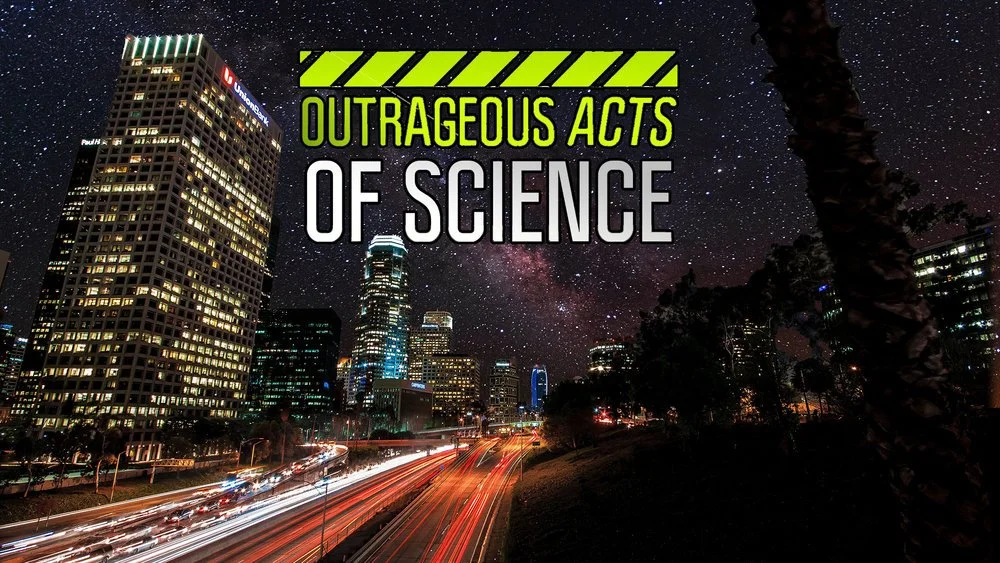Harun Mehmedinovic
Harun is the cinematographer and co-producer on Ice on Fire, a Leonardo DiCaprio-produced feature documentary for HBO which premiered as a Official Selection at Cannes Film Festival, co-cinematographer of giant screen spectacle IMAX Grand Canyon: Rivers of Time for RPG Productions and Destination Cinema, and a co-cinematographer of the upcoming documentary Akicita, which premiered at the Sundance Film Festival.
He is a regular video and photography contributor to BBC Earth, and has contributed photographs and videos to Vogue Italia, National Geographic, Astronomy Magazine, BBC Travel, and Discovery Science. Harun’s photography work has been featured by various media outlets, including The New York Times, Wired, Time, Forbes, NPR, CNN, Gizmodo, Slate, Los Angeles Times, LA Weekly, Vice, and Washington Post. It has also been the subject of a TEDx Talk. Harun has created giant-screen jumbotron music videos for a variety of legendary musicians including The Rolling Stones on their ZIP CODE tour & 2016 Tour, Pink Floyd's Roger Waters 2016 Tour, Desert Trip Concert, Paul Simon's 2018 Homeward Bound Tour, John Mayer's SOB Rock Tour, and Cosmic Gate's "am2pm," He has also produced footage for the National Park Service, including their “100 Years” centennial video campaign.
Harun is the author of three books, portrait series Seance and Persona, as well as the Astrophotography Book and Timelapse Series: SKYGLOW. His photograph of the cloud-inverted Grand Canyon was listed among the 2015 best travel photos of the year by National Geographic, and in 2016, he was on the BBC Earth Instagram team that won a Webby Award for “Best Photography and Graphics.”
Prior to his venture into documentary video and photography, Harun’s narrative film In the Name of the Son premiered at Telluride Film Festival and won over thirty international awards, including Shanghai, Savannah, and Cleveland film festivals. It was the first live action short film to ever receive an exclusive screening for the members of the United States Congress on Capitol Hill.
Follow Harun:
www.bloodhoney.com
Instagram: @skyglowproject
Twitter: @skyglowproject
Facebook: Harun Mehmedinovic
CLIENTS
ICE ON FIRE
ICE ON FIRE, an eye-opening documentary that focuses on many never-before-seen solutions designed to slow down our escalating environmental crisis, goes beyond the current climate change narrative and offers hope that we can actually stave off the worst effects of global warming.
With sweeping cinematography of a world worth saving, Ice on Fire was filmed across the globe, from Norway to Alaska, Iceland to Colorado, Switzerland to Costa Rica to Connecticut. The film highlights firsthand accounts of people at the forefront of the climate crisis, with insights from scientists, farmers, innovators and others.
“Putting quibbles about pitch and approach aside, then as a beginners’ guide to Arctic thaw and its consequences this is pretty exemplary stuff. Instead of anchoring the explanation around a dominant, often onscreen TED-talk-cum-storyteller like campaigner Al Gore or naturalist David Attenborough, Ice on Fire keeps the narration (only heard) from DiCaprio to a judicious medium, bedding it over stunning high-definition footage, often shot with drones or using time-lapse techniques, under the direction of cinematographer Harun Mehmedinovic. Mostly composed of original footage but with bits of archive material thrown in as needed, the film travels to the Arctic, Alaska, Norway, Iceland, Costa Rica and the fire-ravaged ruins of Northern California to tell its story.”
““Ice on Fire” looks exactly as expected, full of grandiose drone shots of some of the globe’s most vulnerable spots — DP (and co-producer) Harun Mehmedinovic previously worked on “BBC Earth” and was clearly influenced by the groundbreaking series. Though operating with an eye for large-scale images, the producers were surely cognizant that most audiences are accustomed to watching this sort of footage on home screens of varying sizes.”
“Performance Worth Watching: This film is definitely about Mehmedinovic’s cinematography. Connors uses him well, as he gets sweeping views of the Arctic, but also shows great vistas that show some of the solutions that are being tried, like a power plant that pulls carbon from the atmosphere and transfers it to a greenhouse, or another system from the same company that grabs carbon and stores it underground as rock in an amazingly fast two hours.”
“Be it the drone shots of Arctic ice sheets or a journey through the Costa Rican rain forests, Harun Mehmedinovic’s cinematography (also co-producer) is simply fabulous. While it looks great on mobile phones, do watch Mehmedinovic’s work on a bigger screen, if possible. It gives you a sense of what we will be missing if we don’t fight the climate crisis.”
SKYGLOW PROJECT
SKYGLOWPROJECT.COM is an ongoing crowdfunded quest to explore the effects and dangers of urban light pollution in contrast with some of the most incredible Dark Sky areas in North America. Brainchild of Gavin Heffernan and Harun Mehmedinovic, this book & timelapse video project is being produced in collaboration with International Dark-Sky Association (darksky.org).
WIRED "Talking Pictures" Interview with Gavin Heffernan
Harun Mehmedinovic speaking at TEDx
PORTRAIT BOOKS: SEANCE, PERSONA & DREAMS
"During my travels around the film festival circuit, I met old friends – some of whom I hadn't seen in years. Many were rooted in a 9-5 existence, living highly structured, stressful lives. They rarely, if ever, lived in the moment and engaged in creative or artistic endeavors. Instead of going to a coffee shop to catch up, I proposed that they take a day off, pick a place that has meaning to them, and choose clothes in which they feel like themselves. That was the starting point. From there the idea was to improvise; spontaneity was to be at the heart of the process.
Initially, my friends asked me to give them instructions and sometimes wondered what they were doing there, feeling bored or frustrated. Slowly, their minds began to let go, and they started doing what they felt like: jumping, climbing, wielding props, and taking risks. It felt almost like a return to childhood, physicality took over, and the camera was there to capture the energy of the moment, telling a story.
These "séances" sometimes went on for 10-15 hours. They included long hikes through mountains, head-on collisions with hail and snow, walks through swamps and lakes, and quite a few mosquito bites and bruises.
The experience of the day was most important, not the resulting images. You could never predict what would come of it, and the idea was to let go and let things come together by circumstance. This is very opposite of the notions of safety and caution that we are bombarded with by the current society. Although being in front of the camera while letting go may seem uncomfortable, after these "séances," just about every person wanted to keep going or do it again. Each shoot was its own unique adventure. This experience of living in the moment, in the present, the rush of adrenaline and the feeling of being a child again, uninhibited no matter how silly or dangerous, proved to be liberating.
I called the project "Bloodhoney" in reference to the Balkans, the region I am originally from. It is a combination of two Turkish words: Bal, meaning “honey” and Kan, meaning “blood.” The name refers to the bittersweet nature of life, the moments of beauty and the sublime spontaneously captured in the photographs."


































